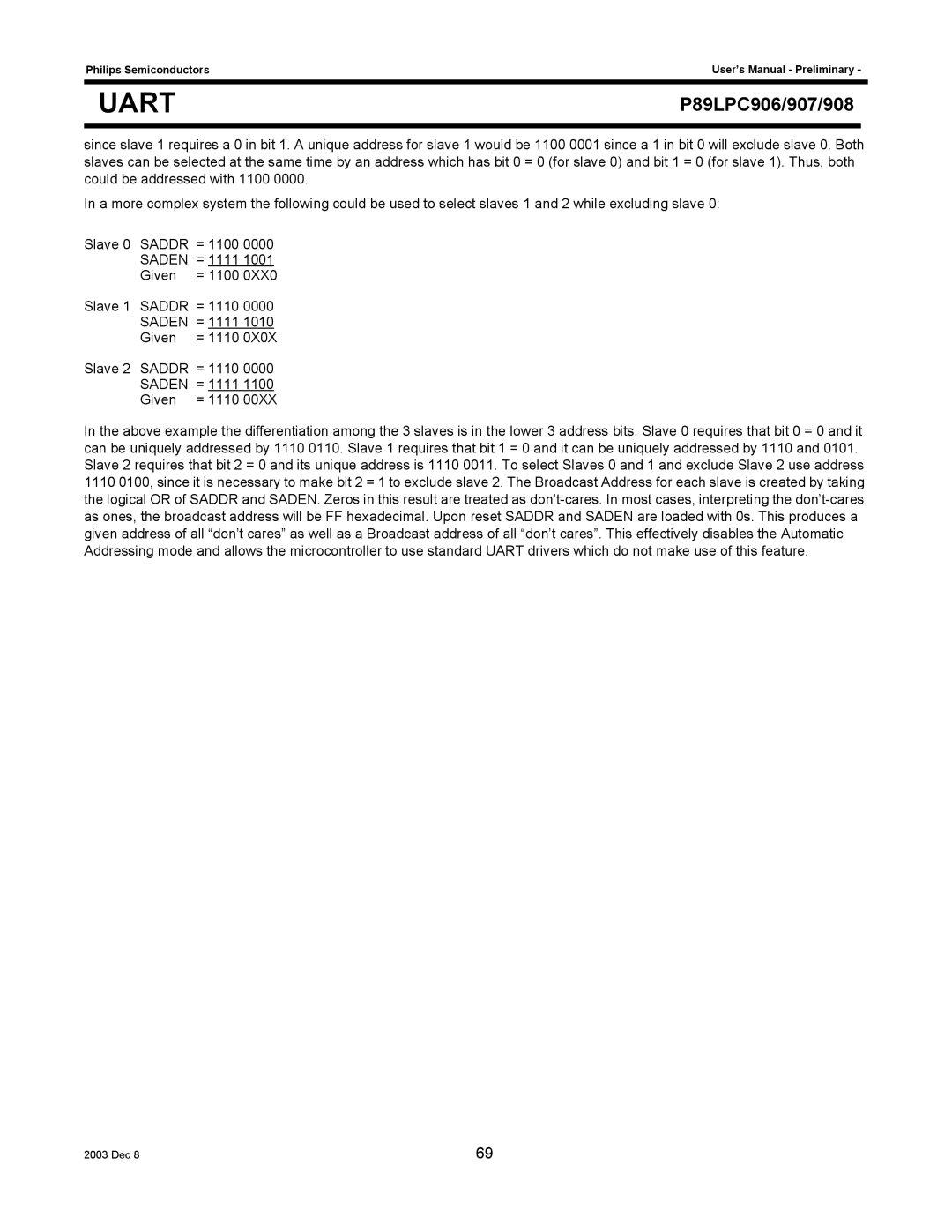Philips Semiconductors | User’s Manual - Preliminary - | |
|
|
|
UART | P89LPC906/907/908 |
|
since slave 1 requires a 0 in bit 1. A unique address for slave 1 would be 1100 0001 since a 1 in bit 0 will exclude slave 0. Both slaves can be selected at the same time by an address which has bit 0 = 0 (for slave 0) and bit 1 = 0 (for slave 1). Thus, both could be addressed with 1100 0000.
In a more complex system the following could be used to select slaves 1 and 2 while excluding slave 0:
Slave 0 | SADDR = 1100 | 0000 | |
| SADEN = 1111 | 1001 | |
| Given | = 1100 | 0XX0 |
Slave 1 | SADDR = 1110 | 0000 | |
| SADEN = 1111 | 1010 | |
| Given | = 1110 | 0X0X |
Slave 2 | SADDR = 1110 | 0000 | |
| SADEN = 1111 | 1100 | |
| Given | = 1110 | 00XX |
In the above example the differentiation among the 3 slaves is in the lower 3 address bits. Slave 0 requires that bit 0 = 0 and it can be uniquely addressed by 1110 0110. Slave 1 requires that bit 1 = 0 and it can be uniquely addressed by 1110 and 0101. Slave 2 requires that bit 2 = 0 and its unique address is 1110 0011. To select Slaves 0 and 1 and exclude Slave 2 use address 1110 0100, since it is necessary to make bit 2 = 1 to exclude slave 2. The Broadcast Address for each slave is created by taking the logical OR of SADDR and SADEN. Zeros in this result are treated as
2003 Dec 8 | 69 |
